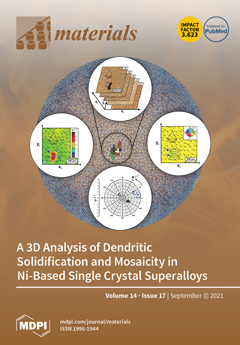Open AccessArticle
The Expression of Allele Changes in NLRP3 (rs35829419) and IL-1β (+3954) Gene Polymorphisms in Periodontitis and Coronary Artery Disease
by
Jaideep Mahendra, Abirami Nayaki Rao, Little Mahendra, Mohammed E. Sayed, Maryam H. Mugri, Thodur Madapusi Balaji, Saranya Varadarajan, Raghunathan Jagannathan, Sruthi Srinivasan, Hosam Ali Baeshen, Reji Mathew and Shankargouda Patil
Cited by 3 | Viewed by 1876
Abstract
Background: Inflammasomes have been shown to play a pivotal role in periodontal disease pathogenesis. However, their role in periodontitis subjects with coronary heart disease remains unclear. This study aimed to obtain the expression of NLRP3 (rs35829419) and IL-1β (+3954) gene polymorphisms in the
[...] Read more.
Background: Inflammasomes have been shown to play a pivotal role in periodontal disease pathogenesis. However, their role in periodontitis subjects with coronary heart disease remains unclear. This study aimed to obtain the expression of NLRP3 (rs35829419) and IL-1β (+3954) gene polymorphisms in the subgingival plaque and blood samples of generalized periodontitis (GP) subjects with and without coronary heart disease (CHD). Methods: A total of 70 subjects were grouped into two; GP and GP with CHD. Demographic variables and periodontal and cardiac parameters were recorded from both the groups. Subgingival plaque and blood samples were obtained from both the groups and were further subjected to the identification of NLRP3 (rs35829419) and IL-1β (+3954) expression and allele change using a conventional polymerase chain reaction (PCR) and gene sequencing (Sanger’s method). Results: Amongst the demographic variables, age and monthly income were statistically significant between the two groups. Plaque index (PI), clinical attachment level (CAL), high-density lipoprotein (HDL), and low density-lipoprotein (LDL) exhibited statistically significant levels between the two groups. The NLRP3 (rs35829419) and IL-1β (+3954) genes showed a statistically significant association with allele change (frequency) among the groups. The general comparison of all the parameters with the allele change of NLRP3 (rs35829419) and IL-1β (+3954) in the subgingival plaque and blood samples showed statistically significant associations among the two groups. Conclusion: The present study highlighted an allele change in IL-1β (+3954) gene polymorphisms which may play an important role in the pathogenesis of periodontitis and coronary heart disease.
Full article
►▼
Show Figures






